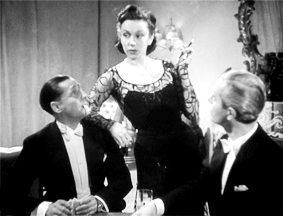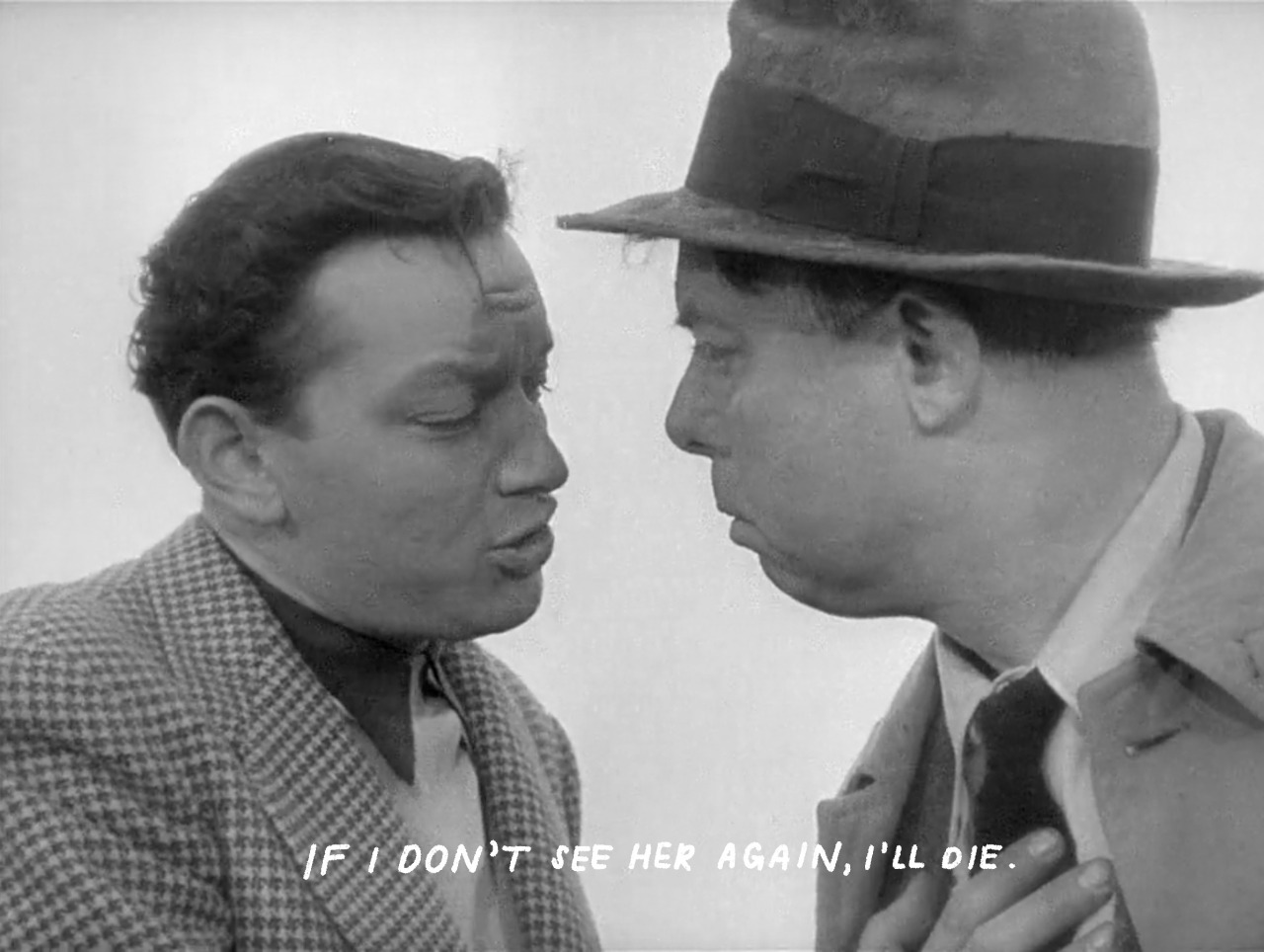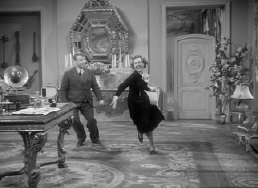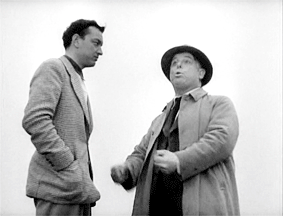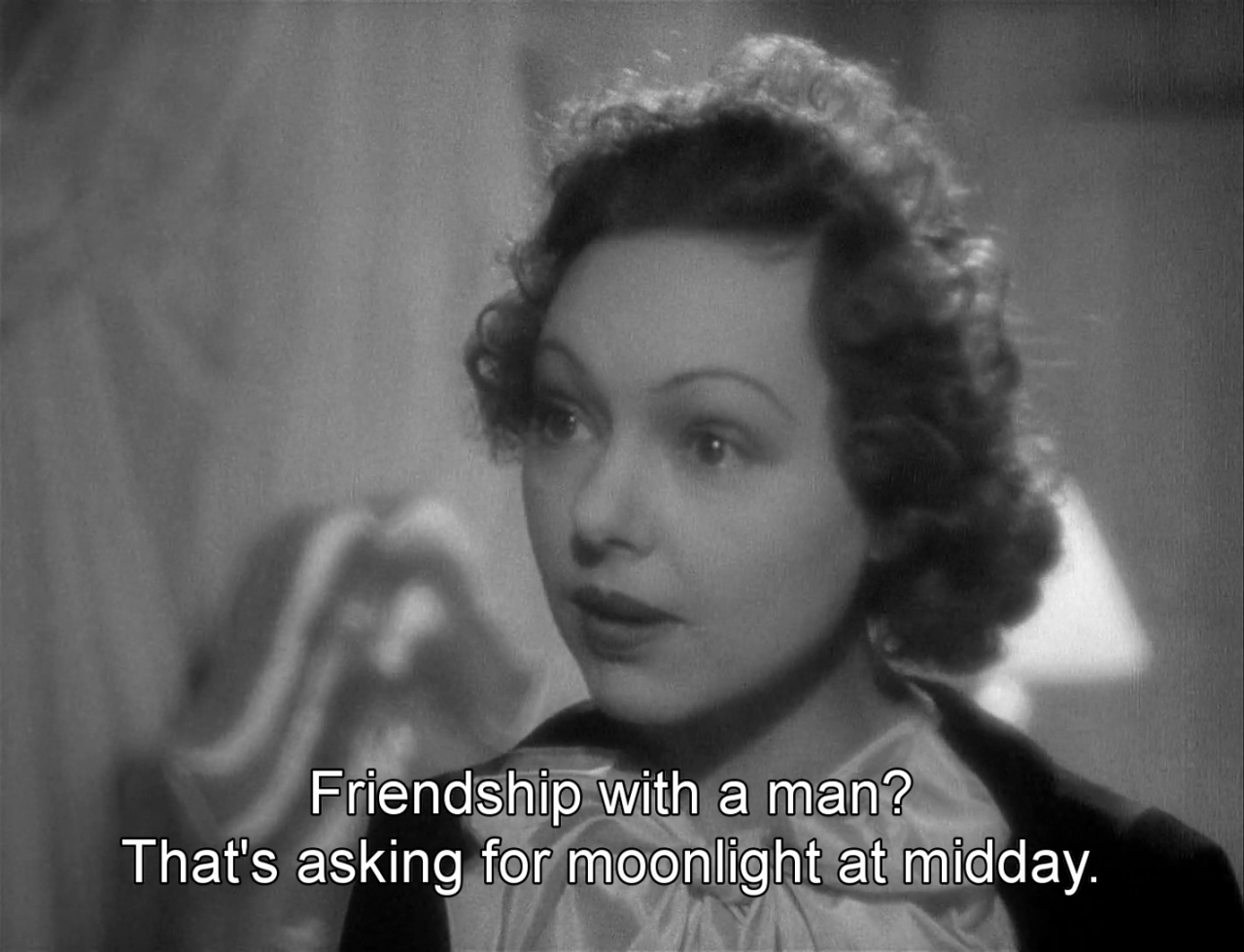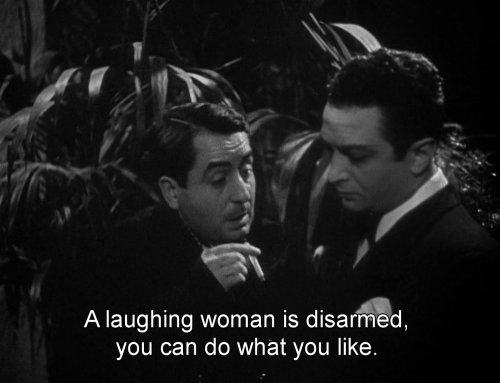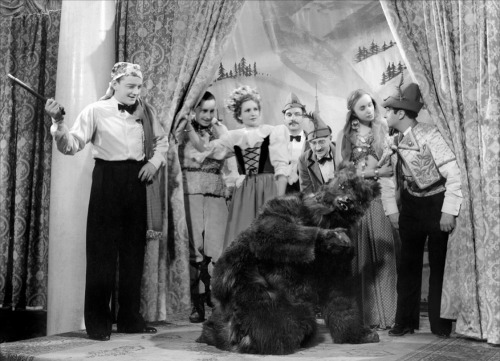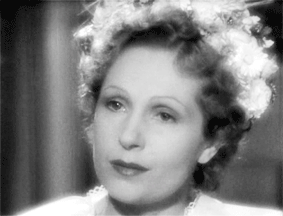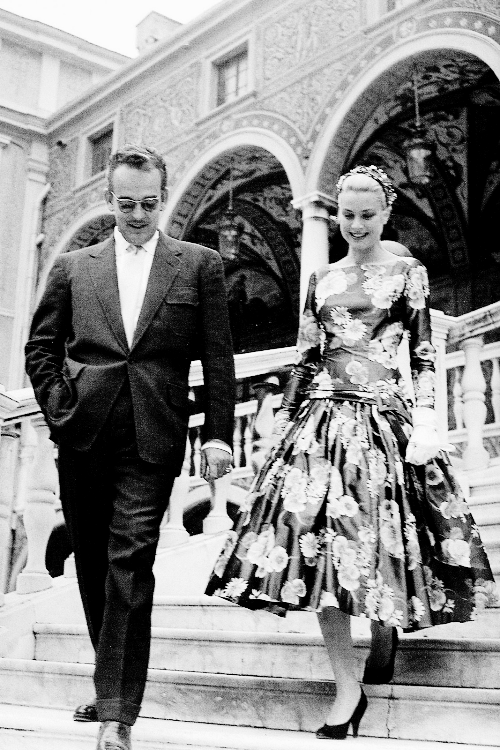I am a Fugitive from a Chain Gang (1932) and the modern-day Jean Valjean
ESTE ARTIGO TEM
SPOILERS
THIS ARTICLE HAS SPOILERS
Sempre que eu penso no filme “O
Fugitivo”, de 1932, eu não posso evitar pensar também no livro “Os Miseráveis”.
Quando eu penso no protagonista do filme da Warner Bros – James Allen, ou Jim,
interpretado por Paul Muni – eu o vejo como um Jean Valjean moderno, à imagem e
semelhança do protagonista do livro de Victor Hugo.
Whenever I think about the 1932 movie “I am a Fugitive from a Chain
Gang”, I can’t help but also think about the book “Les Misérables”. When I
think about the lead in the Warner Bros flick – James Allen, or Jim, played by
Paul Muni – I see him as a modern Jean Valjean, the lead of Victor Hugo’s book.
Jean Valjean roubou um pedaço de pão
para duas para sua irmã e seus sobrinhos, que passavam fome. James Allen foi
forçado por Pete (Preston Foster), que ele acabara de conhecer, a roubar cinco
dólares de um restaurante. Jean Valjean foi condenado a vinte anos de prisão –
na verdade cinco, mas outros 14 foram adicionados porque ele tentou escapar
muitas vezes. James Allen foi condenado a 10 anos de trabalhos forçados. Nós
não chegamos a ver muita coisa dos anos que Jean Valjean passou na cadeia, mas
podemos imaginar que estes anos foram bem parecidos com a pena de James Allen.
Jean Valjean stole one piece of bread to give his sister because she and
her children were starving. James Allen was forced by Pete (Preston Foster), who
he had just met, to rob five dollars from a bar. Jean Valjean was condemned to
twenty years in prison – actually five, but fourteen more were added as he
tried to escape many times. James Allen was condemned to ten years of hard
labor. We don't get to see a lot of Jean Valjean's time in jail, but we can
imagine that they were a little like James Allen's.
Comida horrível. Uma corrente entre
suas pernas – e outra corrente, maior e mais forte, para prender todos os
detentos juntos quando eles dormem ou são transportados para o trabalho, como
se eles fossem gado ou extremamente perigosos. Acordar às 4:20 da manhã – hora escolhida
de propósito? Segregação racial até mesmo na cadeia. Uma jornada de trabalho
diária de quase 16 horas. Ter de pedir permissão para secar o suor do seu
próprio rosto. Sofrer abuso e ser punido fisicamente por descumprir qualquer
regra. A experiência de Jim Allen na cadeia pode ser descrita com a canção do
musical Les Mis: “Olhe para baixo, para baixo. Não olhe nos
olhos deles. Olhe para baixo, para baixo. Você está aqui até morrer”.
Terrible food. A chain between your legs – and another chain, bigger and
stronger, to hold together all inmates as they sleep and are transported to work,
as if they were cattle or extremely dangerous. Waking up at 4:20 AM – time
chose on purpose? Racial segregation even in the jail. A daily labor journey
that lasts almost 16 hours. Having to ask for permission even to wipe the sweat
of your own face. Suffering abuse and being physically punished for breaking
any rules. Jim Allen's experience in the chain gang can be described by the
music from Les Mis: “Look down, look down. Don't look 'em in the eye. Look
down, look down. You're here until you die.”
Mas, ao contrário do prisioneiro
24601, Jim Allen não é capaz de esperar que sua sentença seja cumprida para começar
sua saga. Depois de alguns meses, ele planeja e executa uma fuga. E ele não tem
apenas um Javert atrás dele, mas sim dois policiais com cães treinados. Jim os
despista ficando embaixo d’água em uma sequência eletrizante, e de repente ele
está livre – mas com um andar engraçado por causa dos meses com as pernas
acorrentadas.
But, unlike prisoner 24601, Jim Allen couldn't wait his whole sentence
to be over to start his saga. After a few months, he plans and executes an
escape. And he doesn't get only one Javert after him, but two cops with dogs.
Jim outwits them by going underwater in a chilling sequence, and suddenly he is
free – but with a funny walk thanks to the chains he had between his legs for
months.
Enquanto fora da lei e fugitivo,
tanto Jean Valjean quanto James Allen precisam manter os olhos bem abertos.
Eles mudam de identidade, mas isso não é o suficiente. James Allen sempre fica
alerta quando vê um policial na rua, e um encontro particularmente nervoso
acontece em uma barbearia – um encontro nervoso porém irônico, porque o
policial descreve o fugitivo, mas não é capaz de reconhecê-lo bem ali na sua
frente.
As an outlaw and a fugitive, both Jean Valjean and James Allen must keep
their eyes wide open. They change identity, but this is not enough. James Allen
is always suspicious when he sees a police officer on the streets, and a
particularly nervous encounter occurs in a barber shop – a nervous yet ironic
one, because the officer describes the fugitive, but can't recognize the man in
front of him.
James Allen muda seu nome para allen
James e consegue um trabalho na construção civil. Ele aluga um quarto de Marie
Woods (Glenda Farrell) e obtém mais do que só um quarto – afinal, é um filme
feito antes do código Hays. Quando Allen para de dar atenção a Marie, ela o
chantageia: ela descobriu que ele é um fugitivo através de uma carta do irmão
dele, e agora ela quer se casar com ele. Depois do casamento, ela gasta o
dinheiro dele e o trai, mas ainda mantém a chantagem. Pelo menos Jean Valjean
teve a sorte de nunca ter se casado.
James Allen changes his name to Allen James and gets a job as a
construction worker. He rents a room from Marie Woods (Glenda Farrell), and
gets more than just a room – after all, it's a pre-Code movie. When Allen stops
giving attention to Marie, she blackmails him: she discovered that he is a
fugitive from a chain gang from a letter his brother sent him, and now she
wants to marry him. After the wedding, she spends a lot and cheats on him, but maintains
the blackmail. At least Jean Valjean was lucky enough to never get married.
Ao ser preso pela segunda vez, após a
morte de Fantine, Jean Valjean é condenado à prisão perpétua. Quando ele salva
um marinheiro que estava se afogando, a multidão clama por sua liberdade. Algo
semelhante acontece com Allen quando Marie o entrega: a questão legal gera um
debate sobre campos de trabalhos forçados para detentos. Eu sei muito pouco
sobre o sistema penal, mas como ser humano eu sei que campos como estes são
absurdos e sádicos.
In a second prison, after Fantine's death, Jean Valjean is condemned to
serve life sentence. As he saves a sailor who is drowning, the people beg for
his release. Something similar happens to Allen when Marie turns him: the legal
issue generates a debate about chain gangs. I know very little about the penal
system, but as a human I know chain gangs are absurd and sadistic.
O perdão da sentença é oferecido a
James se ele ficar mais 90 dias na prisão estatal. Ele aceita a oferta, porque
lhe foram prometidos apenas 90 dias fazendo trabalho simples no escritório da
cadeia, mas quando ele volta ele é mandado novamente para o campo de trabalhos forçados.
Aqui está uma verdade sobre a prisão: como o sistema penal raramente recupera
os detentos, muitos acabam voltando para cumprir mais penas.
James is offered a pardon if he spends 90 more days in the states' jail.
He accepts it, because he was promised 90 easy days doing simple work and the
jail's office, but when he comes back he is sent to the old chain gang. Here is
something true about being arrested: since the penal system rarely recovers the
inmates, many of them come back to serve more sentences.
Tanto “Os Miseráveis” quanto “O
Fugitivo” provam que a cadeia não recupera ninguém, e ainda acaba transformando
os detentos em pessoas piores. Tanto Valjean quanto Allen roubam MAIS depois
que saem da prisão. Ao ter seu perdão negado duas vezes, Jim decide fugir de
novo. Na última cena, ele diz adeus à sua namorada Helen (Helen Vinson) e
quando ela pergunta “mas como você vive?” ele responde de maneira
surpreendente: “eu roubo”.
Both
“Les Misérables” and “I am a fugitive from a chain gang” prove that the jail recovers no one, just makes people worse. Both Valjean and Allen steal
MORE when they leave jail. When Jim's pardon is denied twice, he decides to
escape again. In the last scene, he says goodbye to his sweetheart Helen (Helen
Vinson), and when she asks “but how do you live?” he answers the most
surprising way: “I steal”.
Jim é o ‘homem esquecido’ (‘forgotten
man’) da canção de Joan Blondell ao final de “Cavadoras de Ouro” de 1933: um
veterano da Primeira Guerra Mundial afetado pela Grande Depressão e ignorado
pelo Novo Acordo de Roosevelt. Havia tantos destes homens esquecidos que, em
uma cena, Jim tenta vender sua medalha de honra da guerra para uma loja de
penhores, e descobre que a loja já tinha uma pilha de medalhas semelhantes
vendidas por veteranos desesperados.
Jim is the 'forgotten man' sung by Joan Blondell in the end of “Gold Diggers
of 1933”: a WWI veteran affected by the Great Depression and ignored by the New
Deal. There were so many forgotten men that, in a scene, Jim tries to sell his
medal of honor to a pawn broker, only to find that the man already had a pile
of similar medals sold by other desperate veterans.
Sim, Jim conseguiu seu trabalho
entediante de volta na fábrica Parker quando ele voltou da guerra, mas não era
mais isso que ele queria. Ele queria construir coisas, e deixou sua cidade
natal para procurar trabalho na construção civil. A condenação de Jim veio
porque ele tinha um sonho – e ele estava no lugar errado na hora errada.
Of course, Jim got his boring job at the Parker factory back when he
returned from the war, but it wasn't what he wanted anymore. He wanted to be a
constructor, and left his hometown to go after work in construction. Jim was
condemned because he had a dream – and he happened to be in the wrong place at
the wrong time.
Muitas das pessoas consideradas “fora da lei” são na verdade boas pessoas que, por causa de circunstâncias extremas,
precisam fazer algo de errado – e às vezes eles não fazem nada de errado. Um
bom exemplo é o filme “Idade Perigosa”, outro filme da Warner de 1933, que
mostra como bons adolescentes se tornam foras da lei ao pegar carona em trens
indo de cidade em cidade, na esperança de encontrar emprego.
Many of the people who come to be called 'outlaws' are actually good
people caught in extreme circumstances that make them do something wrong – and
sometimes they do nothing wrong. A good example is the film “Wild Boys of the
Road”, also a Warner release from 1933, that shows how good teenagers became
outlaws by catching trains from town to town, in the hopes of one day finding a
job.
Houve uma figura real por trás da
história de “O Fugitivo”: Robert E. Burns, um fugitivo de um campo de trabalhos
forçados na Geórgia, que na época passava por um novo julgamento. Ele contou
sua experiência no livro “I am a fugitive from a Georgia chain gang!” (sem
tradução para o português), publicado em seis edições da revista True Detective
Mysteries em 1932, e compilado em forma de livro no ano seguinte.
There was a real figure behind the story of “I am a fugitive from a
chain gang”: Robert E. Burns, a real fugitive from a chain gang in Georgia, who
at the time was under a new judgment. He chronicled his experience in the book “I
am a fugitive from a Georgia chain gang!”, published as a six-part serial at
the True Detective Mysteries magazine in 1931, and as a book the following year.
Robert Elliott Burns voltou da guerra
traumatizado e em casa descobriu que sua namorada havia se casado com outro
homens e que seu emprego já havia sido preenchido por outra pessoa. Em 1922,
Burns e dois outros homens roubaram 5,80 dólares para comer – eles foram presos
e Burns foi condenado a 10 anos de trabalhos forçados. E assim Burns escapou da
prisão – duas vezes.
Robert Elliott Burns returned from the war suffering from shell shock to
find out his girl was married to someone else and he had no job anymore. In
1922, Burns and two other guys stole US $5.80 to eat – they were caught and
Burns was sentenced to 10 years of hard labor. So burns escaped – twice.
Na época das filmagens, Burns viva em
Nova Jersey, e por causa da diferença nas leis estaduais ele não pôde ser
mandado de volta para a cadeia e um julgamento teve início. Burns foi escondido
para Hollywood para ajudar na produção do filme. Ele ajudou muito, mas de
acordo com o roteirista não-creditado Sheridan Gibney, Burns se assustava
facilmente com os barulhos no estúdio, e ficava nervoso ao ouvir sirenes de
polícia e barulhos de tiros. Mas a história de Burns teve um final feliz: ele
se retirou da vida pública após a estreia do filme, e em 1945 sua pena foi
considerada cumprida. O filme certamente ajudou com seu caso, e também levou à
extinção dos campos de trabalhos forçados.
When the film was being shot, Burns lived in New Jersey, and because of
different state laws he wasn’t taken back to the chain gang and a judgment
started. Burns went to Hollywood undercover in order to help in the film
production. He did help a lot, but according to uncredited screenwriter Sheridan
Gibney, he was easily scared by the studio’s noises, and got startled whenever he
heard a police siren or guns being fired. But Burns’ story ended well: he
slipped out of the public eye after the film was made, and in 1945 his sentence
was commuted. The film certainly helped in his case, and also led to the
extinction of the chain gangs.
Não podemos evitar torcer por James
Allen, não apenas porque ele está passando por uma situação absurda e desumana,
mas também porque Paul Muni o interpreta de maneira muito sensível. Um de meus
atores favoritos – talvez porque ele foi considerado “o novo Lon Chaney” no
começo da carreira – Muni colocava muita energia em cada performance. Houve uma
adaptação de “Os Miseráveis” para o cinema em 1935, com Fredric March como Jean
Valjean, feita pela 20th Century Pictures antes de a companhia se unir à Fox.
Uma pena que Muni tinha contrato com a Warner: com base em “O Fugitivo”, posso
apostar que ele faria um ótimo Jean Valjean.
We can’t help but root for James Allen, not only because his situation
is absurd and inhuman, but also because Paul Muni plays him in a very sensitive
way. One of my favorite actors – maybe because he was labeled “the new Lon
Chaney” in the beginning of his career – Muni put lots of energy in all performances.
There was a “Les Misérables” film adaptation in 1935, with Fredric March as
Jean Valjean, made by 20th Century Pictures right before it merged
with Fox. Too bad Muni was under contract with Warner: per “I am a fugitive
from a chain gang”, I bet he would have made a great Valjean.
“O Fugitivo” é um dos filmes mais
duros feitos em 1932. Ele mostra uma verdade feia e difícil de engolir, mas ao
mesmo tempo foi um filme agente de mudança social. É por isso que precisamos de
filmes duros: para exigir e fazer mudanças na sociedade. “O Fugitivo”
indiretamente ajudou muitos homens como James Allen. E nós vimos só o começo da
dura vida de Jim. Talvez ele tinha tido a mesma sorte de Jean Valjean e
encontrou uma doce Cosette para chamar de sua. Eu espero que sim.
“I was a fugitive from a chain gang” is one of the roughest films made
in 1932. It shows an ugly truth, a hard one to swallow, but it was an agent of
social change. That’s why we need rough movies: to demand and make change in
society. “I am a fugitive from a chain gang” indirectly helped so many men like
James Allen. And we got only the beginning of Jim's rough life. Maybe he was
lucky like Jean Valjean and found a sweet Cosette for himself. At least
I hope he did.
This is my contribution to the 2018 CMBA Fall Blogathon, whose theme is
Outlaws. All entries can be found at the Classic Movie Blog Association’s blog.













